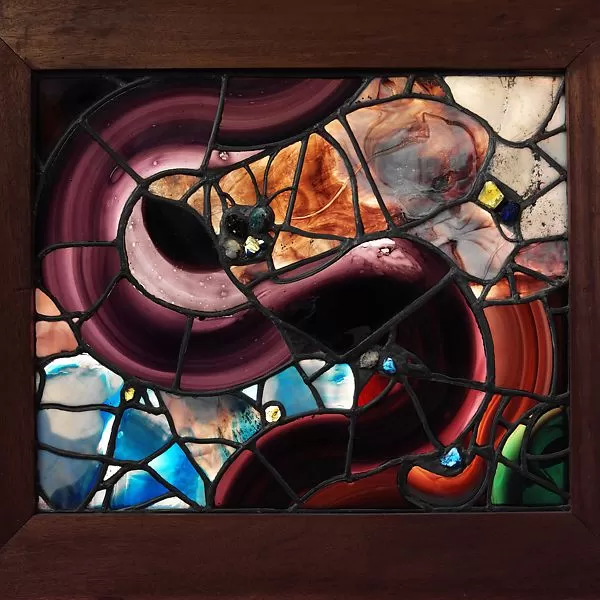Icons of 20th Century Design: An Exploration of Tiffany’s Art Glass, European Design, and the Prairie School
June brings the beginning of summer and the beginning of a new online series from the organization that brought you the popular online series “Living the Simple Life: the Arts and Crafts Movement at Home.” The new class Icons of 20th Century Design, which lasts for three Saturday sessions, will focus on three different styles.
“We’re pleased to present this new 3-session class, Icons of the 20th Century, which emerged from attendee requests,” says Executive Director Vonda Givens. “The prior class was a ‘deep dive’ into all things Arts and Crafts. These sessions take a broader view, putting the Arts and Crafts movement into context within its time.”
All classes will be held from 1:00pm to 2:00pm EST through the Zoom platform. Please visit the Stickley Museum at Craftsman Farms website to register for the classes at www.stickleymuseum.org.

Louis Comfort Tiffany, Window, ca. 1880. Metropolitan Museum of Art.
While often discussed in the context of the Art Nouveau movement, Louis Comfort Tiffany developed an alternate approach to the decorative arts that relied less upon the swirling energy of the vine in favor of a luxurious interpretation of the natural world. Succinctly expressed in his oft-repeated dictum: “Nature is always right… Nature is always beautiful,” Tiffany assembled a talented team of designers, technicians, and craftspeople to execute this vision throughout his long career. This session focuses on Tiffany’s career, as well as his impact on the American art glass industry and his contemporaries.
June 13, 2020 – “Art considered in its Application to Life”: European Design in 1900.
With nearly 50 million visitors in 1900, the impact of the Paris Exposition of 1900 is difficult to overstate. For many, this was the first time to see the period’s major movements–Art Nouveau, the Arts and Crafts, and the Vienna Secessionists–displayed in a critical mass. With works from Hector Guimard, to Josef Hoffman, to the Bromsgrove Guild, the fair presented a carefully curated overview of modern decorative arts. Despite the superficial differences of style, critic Victor Champier correctly observed the common underlying impulse at the Exposition: “what we call Decorative Art is, in fact, nothing else than art considered in its application to life..”
June 20, 2020 – “To establish an Organic Integrity”: Frank Lloyd Wright and the Prairie School
In hindsight, it is no wonder that Chicago gave rise to the distinctive American design aesthetic we call the Prairie School, for all of the ingredients were there: a devastating fire in 1871 that destroyed three square miles of the city, tremendous population growth in the following decades, and an embrace of modernity unencumbered by historical precedent. Epitomized by the work of Frank Lloyd Wright, this session explores the Prairie School aesthetic through Wright’s interiors, those of his contemporaries like Niedecken, Maher, and Elmslie, as well as firms like Linden Glass and Giannini & Hilgart.
Each of the classes has a $25 registration fee, all of which goes to help with operational costs for the museum. However, if you need to miss the live class for any reason, the Stickley Museum will have you covered. “We hope these classes are a fun way to learn and support the museum at the same time,” says Givens. “Our focus right now is on each week’s live class session, but potential attendees should know that, as a thank you, all paid attendees receive a link to the session recording once it’s available. So, even if you register and miss the live class, you will still receive the recording to view when you have the time.”
